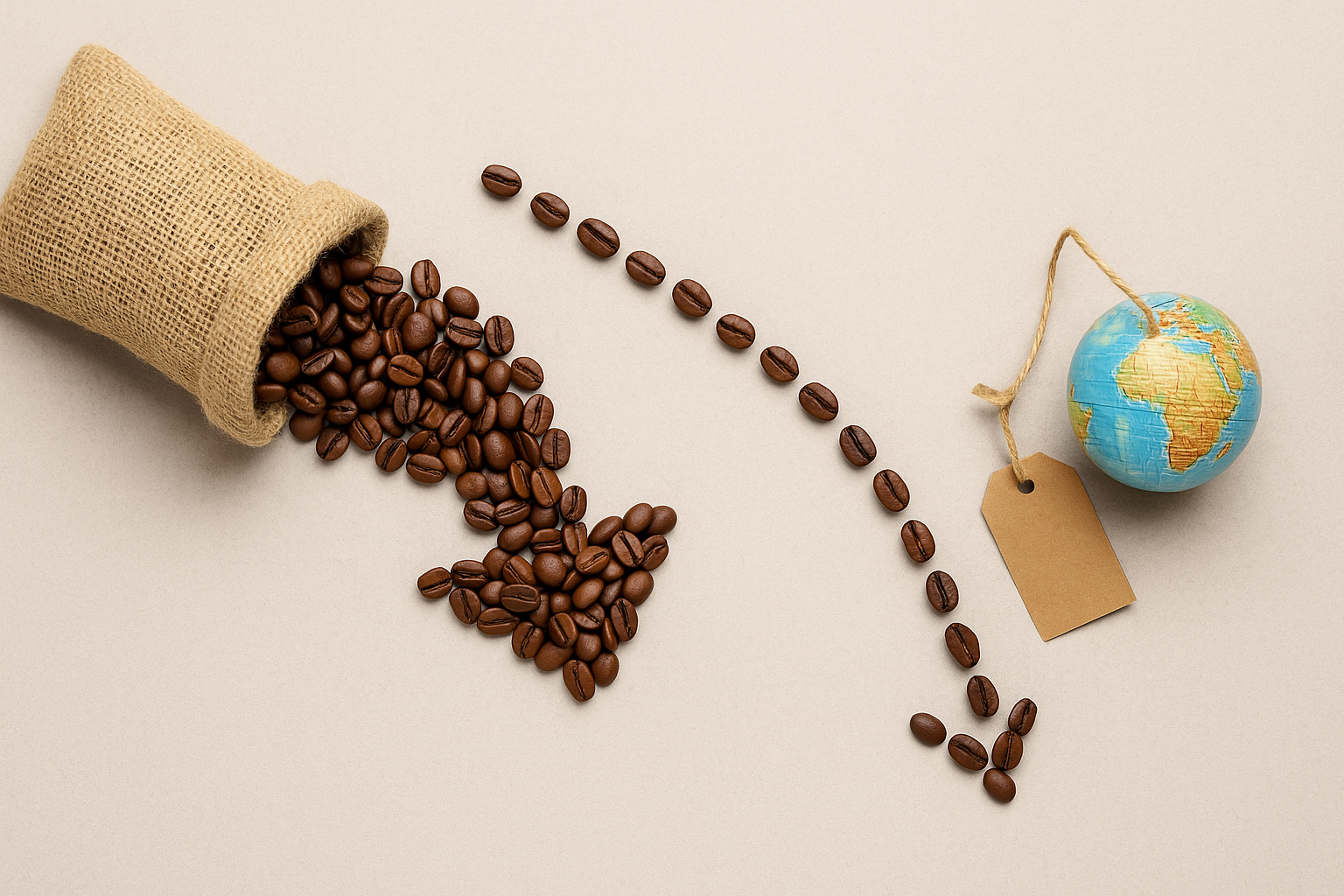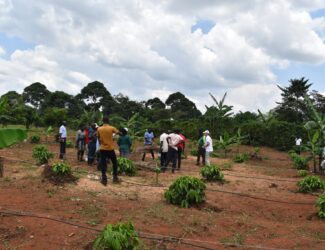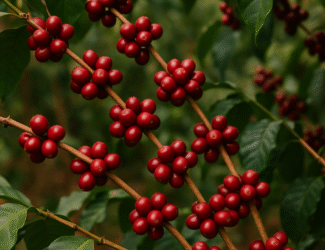
Coffee Market Trends: Tariff Worries and Global Supply Dynamics
Dubai, August 7, 2025 (Qahwa World) – Coffee prices dipped on Wednesday, driven by concerns over potential U.S. tariffs on Brazilian coffee and expectations of plentiful global supply. Arabica futures for September delivery fell 1.77%, while robusta contracts for the same month declined 0.53%.
The market is reacting to uncertainty around a proposed 50% U.S. tariff on Brazilian coffee exports. Without an exemption, this could reduce Brazil’s shipments to the U.S., potentially increasing domestic stockpiles in Brazil and exerting downward pressure on global prices.
Global coffee exports rose 7.3% year-over-year in June, reaching 11.69 million bags, according to the International Coffee Organization. However, cumulative exports from October to June slightly decreased by 0.2% to 104.14 million bags.
Despite the price decline, some factors provide support. In Brazil’s key arabica-producing region, Minas Gerais, rainfall was well below average, with only 2.7 mm recorded in the week ending August 2—about 31% of typical levels. Low precipitation could impact future yields.
Inventory levels are also influencing the market. Arabica stocks monitored by ICE hit a 14.5-month low of 751,044 bags, while robusta inventories reached a one-year high of 7,029 lots, signaling bearish pressure on robusta prices.
Speculative activity is another factor. Funds increased their net-short positions in robusta by 1,226 contracts in the week ending July 29, reaching a two-year high of 5,854 contracts. A shift in market sentiment could trigger short-covering.
Brazil’s 2025/26 coffee harvest is progressing rapidly, with 90% completion by July 30, surpassing last year’s 87% and the five-year average of 84%. Robusta harvesting is nearly complete at 98%, while arabica is at 85%, according to Safras & Mercado. The country’s largest coffee cooperative, Cooxupé, reported that 74% of its members’ harvest was finished by August 1.
Over the past three months, coffee prices have trended lower due to expectations of robust harvests. In June, arabica futures hit an eight-month low, and robusta reached a 1.25-year low. The USDA projects Brazil’s 2025/26 coffee production to increase by 0.5% to 65 million bags, while Vietnam’s output is expected to rise 6.9% to 31 million bags, a four-year high.
However, Brazil’s export data provided some counterbalance. June green coffee exports fell 31% year-over-year to 2.3 million bags, with arabica down 27% and robusta down 42%, according to Cecafé.
In Vietnam, the top robusta producer, drought reduced the 2023/24 crop by 20% to 1.472 million metric tons, the lowest in four years. Coffee exports in 2024 dropped 17.1% to 1.35 million metric tons. The Vietnam Coffee and Cocoa Association lowered its 2024/25 production forecast to 26.5 million bags from 28 million. Still, January–July 2025 exports rose 6.9% to 1.05 million metric tons, per Vietnam’s General Statistics Office.
Looking forward, global coffee production is projected to hit a record 178.68 million bags in 2025/26, up 2.5% from the previous year. This includes a 1.7% decline in arabica to 97.022 million bags and a 7.9% rise in robusta to 81.658 million bags. Global ending stocks are expected to grow 4.9% to 22.819 million bags.
Despite the surplus outlook, analysts at Volcafe forecast an 8.5 million bag deficit for arabica in 2025/26, up from 5.5 million bags in 2024/25, marking the fifth consecutive year of arabica shortages.



